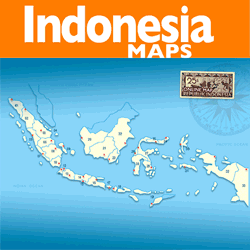Kekayon Museum, Turning On the Record of Indonesian History
The video recording describing the history of Indonesian nation
may be seen often, but a recording in the form of a replica accounting
for Indonesian history from old time to the independence proclamation is
rarely seen, moreover a recording containing the history of the puppet
art from the sixth to tenth centuries. Kekayon museum presents the rare
recording in the location of its foundation, around 1 kilometer of the
East Ring Road.
The museum that describes the history of Indonesian nation as well
as the puppet history was founded on 23 July 1990 by Soedjono
Prawirohadikusumo, a specialist doctor of mentally sick people. He
believed that the art of leather puppet was able to bring someone to
understanding of knowledge and manners to come to maturity in the sense
that one can transform his knowledge to the next generation.
Entering the yard of the museum, you begin to turn on the
recording of the Indonesian history. At the left, front corner of the
museum, there is a building complex of the ancient human beings
describing the origin of Indonesian people. Not far from it, an
Austronesia complex describes the entrance of the new civilization to
Indonesia so that agriculture and trading developed, especially thanks
to the arrival of Chinese people.
At the front part of the museum, there is Borobudur lion statue,
symbolizing the entrance of Hindu Buddha culture in the first - seventh
centuries with Borobudur temple being the top of their culture. Water
tower complex with the roof forming a temple lies at the right, rear of
the museum, describing the triumph of Majapahit that succeeded in
uniting almost all Indonesian current areas, even up to the current
Malaysia and Thailand.
The symbol of Islam civilization advancement as the next
historical scene in Indonesia after the triumph of Hindu Buddha is
symbolized by Kudus Tower. Meanwhile, Pancuran Bidadari complex that is
located at the left, center of the museum symbolizes the influence of
the Dutch nation that colonized Indonesia for 350 years. The two
complexes reflect the events taking place in Indonesia in the sixteenth
century.
Replica of one scene of leather puppet art development is also
made, in the form of Gunungan Kartasura that is located at the left,
rear of the museum, describing the completion puppet stories in the
eighteenth century by an artist of Surakarta Kingdom named Yododiupro
from Kakawin Ramayana to become Serat Ramayana. Baleranu Mangkubumi
complex, Japan statue and Proclamation statue symbolize the scene of
Indonesian history before the independence.
Entering the room of the museum consisting of 4 parts, you will
see collection of various leather puppets owned by Soedjono. There is a
collection of the oldest leather puppets, namely wayang purwa or the
first leather puppets that were performed since the era of Kediri
Kingdom. The available wayang purwa are those made from buffalo skin
with and without accessories. Room 1 and 2 are the places to keep the
puppet collection.
Room 3 keeps other kinds of puppet, for instance Wayang Madya that
existed in Kediri-Majapahit time, telling the time after Bharatayudha
war.
Besides, there are gedhog puppets telling the story of Dewi
Candrakirana, klithik puppet telling Damarwulan and Minakjinggo, Dupara
puppet telling the struggle of Diponegoro and Suluh puppet that tells
the struggle of Indonesian people to get the independence.
What is unique is that this museum keeps Wayang Kancil telling the
legendary story of a mouse deer that stole cucumber, a puppet story
that was adapted to become a famous story among old and young people.
There are two kinds of Wayang Golek originating from West Java, and
statues of some puppet characters such as Dewi Shinta and Rahwana.
In this museum, you can match your zodiac with the characters in
the puppet world and foresee your character through a poster hanging on
the wall that you can read clearly. There is another poster describing
the war strategies used during Brathayuda war, by both Pandawa and
Kurawa, which were successfully implemented to defeat the enemy. Some of
the strategies are lobster pincer and elephant strategies.
You do not have to spend much to visit this museum. The entrance
ticket is IDR 3,000 and additional IDR 2,000 for guidance book. Before
begin your exploration, a guide will explain to you about the history
and parts of the museum. Public transportation is easy to find to reach
this place. |


Tidak ada komentar:
Posting Komentar